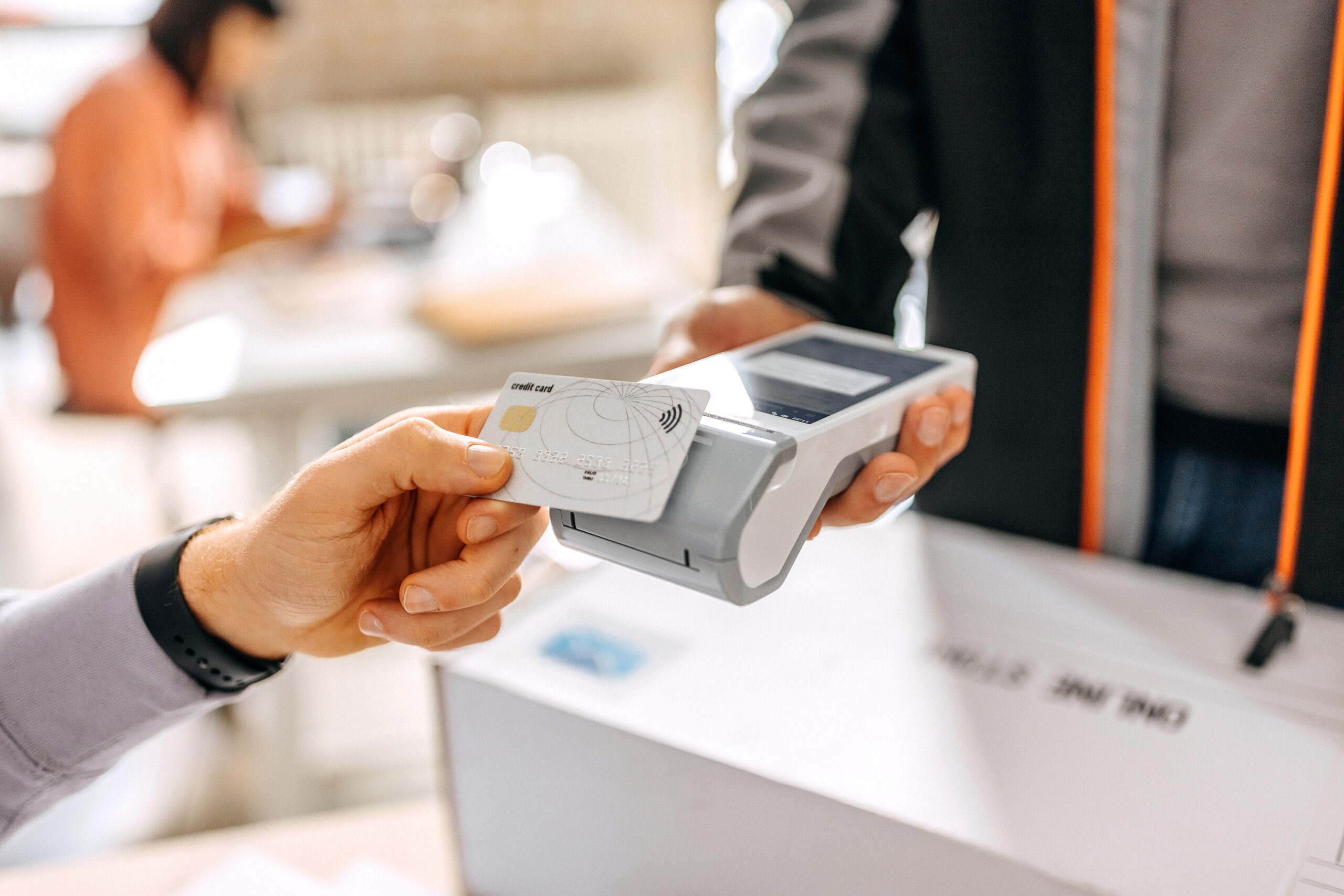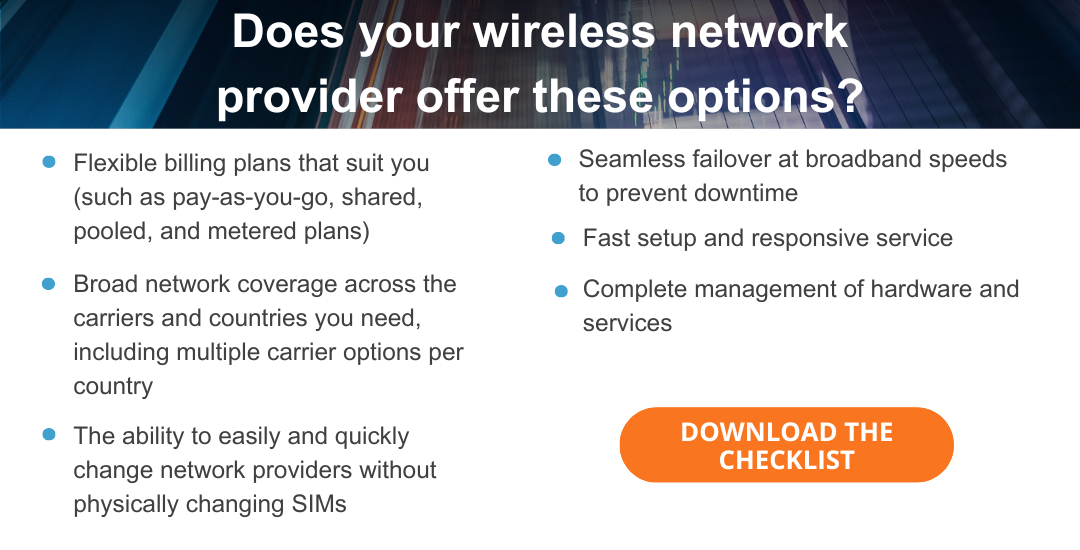Point of sale (POS) systems are the backbone of almost all retail operations. Robust POS connectivity is essential to avoid lost revenue, reputational damage, and loss of valuable customer and operational data. Let’s take a look at the potential impact of poor connectivity and explore how wireless can help retailers boost uptime, improve flexibility, and support growth.
Always-On POS Network Connectivity Is Non-Negotiable But Challenging
POS systems need robust connectivity to ensure uninterrupted payments, while the increasing use of cloud resources and edge computing means more and more business-critical data is traveling across the network.
Networking becomes more challenging in locations such as old buildings or remote areas that can suffer from poor wired connectivity. Where permanent wired connections don’t already exist (for example, at temporary events like festivals or pop-up stores), connecting POS systems reliably can also be difficult.
At the same time, many retailers are finding that the growth of data moving across the network poses a significant challenge. Spikes in network traffic during busy periods, along with the rising quantities of customer data (which retailers rely on for competitive advantage), mean that network capacity can struggle to keep up.
Together, these factors mean that the risk of network downtime for retailers is growing.
POS Connectivity Downtime Has Huge Repercussions for Revenue
When POS connectivity goes down, payments generally can’t be processed, and self-service kiosks and checkouts stop working. This translates directly into lost revenue.
Although the scale of revenue loss varies depending on the company and whether the outage hits during a busy time, the numbers can be staggering. The cost of downtime for large retailers can reach an estimated $5 million for a single hour.
In 2015, Starbucks suffered a massive POS outage across the US and Canada, meaning staff couldn’t process sales. Many locations had to close early or give away free coffee to customers, and the company was ultimately forced to close 13,500 locations while the problem was investigated and fixed. It’s estimated that it cost the company millions of dollars in revenue.
Retailers that rely on busy periods or short transaction windows – such as merchandise outlets in a stadium on event days, or retailers on Black Friday – are particularly vulnerable to the effects of POS network outages.
The Indirect Costs of Downtime Are Also Significant
The costs of POS downtime go beyond losing sales, however.
The data collected through POS systems provides valuable insight into customer profiles, buying trends, and preferences. For example, POS data can show how many glue sticks were sold at the beginning of the academic year, or whether a new kind of thermal clothing is selling well in a cold part of the country. POS systems can also link individual customers and their purchases, allowing retailers to better personalize their offerings.
This data allows companies to understand customer buying trends and increase loyalty, up-sell, and cross-sell. It also helps retail organizations to become more efficient, by providing real-time inventory updates and helping with planning stock levels and staffing for busy periods or high levels of demand. POS downtime interrupts these vital processes, affecting competitiveness.
Downtime can also seriously affect a brand’s reputation. Consumers have increasingly high expectations of the experience they receive from retailers, and almost a third of consumers would walk away from a brand after a single poor experience. Even more damage can result from poor reviews or complaints on social media.
How Wireless Connectivity Mitigates Downtime Risk
Wireless presents an ideal solution to make sure that retail POS systems are always on, particularly in areas or buildings that suffer from poor wired connectivity.
With its greater reliability, it helps to significantly reduce the risk of downtime: organizations using wireless WAN as the primary connection at the majority of sites reported up to 88% less downtime. Wireless services may also be more cost-effective compared to other connectivity options.
Wireless is a highly reliable backup option too: organizations using wireless WAN for failover at most sites experience 62% less downtime. Wireless offers true diversity compared to terrestrial backup options, which can be affected along with the primary connection (for example, if a duct is damaged that houses both the primary and backup links).
Using a mobile virtual network operator (MVNO) for wireless provides the gold standard of connectivity. This is because MVNOs work with multiple different carriers, allowing them to switch connectivity seamlessly to another network if one carrier experiences an outage.
Using an MVNO also makes it easier to select the wireless network that works best for each site, without the headache and complexity of handling contracts with each individual carrier.
Wireless Offers Fast Provisioning and Greater Stability
Wireless is quick to provision, making it ideal for speedily connecting temporary sites such as events and pop-up stores. On average, wired connections take 35 days to set up, but 4G or 5G connections can generally be online in about 26 minutes.
Wireless services based on 4G LTE/5G provide better coverage, security, and stability compared to Wi-Fi, which is ideal if retailers need to move POS terminals around a store or location. This makes it easier for retailers to move the sale to the customer, creating a faster, more convenient experience and reducing wait times.
Wireless Is Ready for Retail’s Growing Demands
Today’s wireless is well-placed to cope with the rising bandwidth needs of retailers as they grow and handle more and more sales and data: it’s believed that 5G has the potential to cope with up to 100 times more connections per square kilometer than 4G.
This growing capacity, speed, and reliability makes wireless an ideal partner to support retailers as they seek to protect revenue, provide superb customer experiences, and boost competitiveness in an increasingly interconnected world.
Finding the Right Wireless Partner
Case study
Discover how Globalgig transformed connectivity for a global retailer specializing in licensed hats and sports apparel. Faced with frequent network outages and slow data transfer, Globalgig upgraded the retailer’s infrastructure, integrating broadband and wireless solutions, resulting in a 40% improvement in signal quality and seamless POS operations. Read the complete study to learn more about how Globalgig’s innovative solutions can drive efficiency and resilience for your retail operations.

